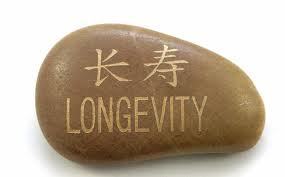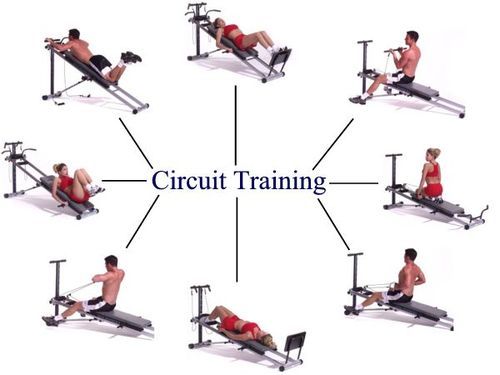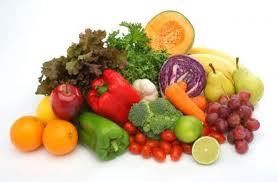Whole grains vs. refined grains in weight management
Frontier Voice of Nutrition Remarks (March 22, 2013) Print PDF
Nalin Siriwardhana, Ph.D., interviewed J. Phil Karl MS, RD, CSSD, LDN., an expert in Biochemical and Molecular Nutrition from Friedman School of Nutrition Science and Policy Tufts University. Reviewed by Dr. Edward Saltzman MD, Associate Professor of Medicine, Tufts University School of Medicine.
Whole grain foods have many health benefits including protection
against cardiovascular disease, high blood pressure and type 2 diabetes
(T2D). Recently, the possibility that whole grains have a beneficial
role in weight management has gained significant attention. However, the
current scientific evidence is mixed with some studies showing benefits
and some studies showing no effects of whole grains on body weight. In
general, more detailed and focused scientific studies are needed to
clearly determine the role of whole grains in weight management.
Whole grains can improve dietary quality during weight loss, and
consumers should continue to replace refined grains with whole grains
because of the higher nutrient content of whole grains and the
beneficial effects of whole grains on other aspects of health. However,
consumers can be easily confused with advertising and labeling of whole
grain foods due to intense market competition. Therefore, a clear
understanding about whole grains and whole grain food is important.

Whole grain Kernel contains Bran, Endosperm and Germ

Whole grain food contain all three parts of the kernel while Bran and Germ parts are mostly removed in refine grain food
Nutrition Remarks interviewed
J. Phil Karl MS, RD, CSSD, LDN, to
better explain the differences between whole grain vs. refined grain
foods as well as potential benefits in weight management. Below is a
concise summary of the interview:
Question from Nutrition Remarks: How do you like to define whole grain food and what are the most commonly used whole grain and refined grain food?
Answer from Phil: Whole grains and whole grain foods contain
all 3 fractions of the grain; the endosperm, germ and bran. The term
whole grain refers to both the intact grain and grains that have been
milled or processed in other ways but contain all of the endosperm, germ
and bran. In contrast, refined grains are mostly endosperm with some
or all of the germ and bran separated and removed.
Both whole grains and refined grains can be eaten alone or used as
ingredients in a variety of foods. For example oats and brown rice are
whole grains, while white rice is a refined grain. Many foods such as
breads, muffins, bagels, pasta, crackers, breakfast cereals, and
grain-based desserts are made from whole grains, refined grains or a
mixture of the two. A whole grain food is often considered a grain-based
food that lists a whole grain as the first ingredient on the ingredient
label. In these foods at least 51% of the grain used is whole grain.
In the United States wheat is the most commonly consumed grain.
However, oats, corn, and rice are also commonly consumed. In other parts
of the world grains such as millet, barley, and rye are widely
consumed.
Question: What consumers need know about available whole grain
products and how they should choose to better fit their needs such as
diabetes, obese and heart conditions?
Answer: To identify the most healthy whole grain foods
consumers need to read nutrition labels. A whole grain should be listed
as the first ingredient in the food, and the ratio of grams of total
carbohydrate to grams of fiber should be ≤ 10 to 1 (this ratio can be
checked by dividing the grams of total carbohydrate by the grams of
fiber listed on the nutrition facts panel). When whole grain is listed
as the first ingredient, foods are likely to contain lesser amounts of
unhealthy fats, added sugars and salt. In general, these whole grain
foods are more likely to contribute to reducing risk for developing
conditions such as cardiovascular disease and type 2 diabetes. Another
consideration is whether the grain is intact or if the grain has been
processed and the endosperm, germ and bran has been recombined. Some
scientists believe that the intact form of grain is more likely to
benefit health.
Looking for food products that display “made with whole grains” or
that contain the whole grain stamp icon on the label can help identify
foods that contain whole grains, but including whole grain ingredients
in a food is not a guarantee that unhealthy ingredients are not
present. Some of these foods can be high in unhealthy fats and added
sugars so the ingredients label and nutrition facts panel still should
be checked.
Question: What is the scientific basis for existing recommendations for whole grain food over refined grain food?
Answer: The 2010 Dietary Guidelines for Americans recommends
that consumers make at least half of their grain servings whole grains.
For an average American, this translates into about 3 slices of bread or
1½ cups of pasta made from 100% whole grain flour per day. The basis
for this recommendation is that people who eat higher amounts of whole
grains have a lower risk of heart disease, type 2 diabetes, and obesity.
Question: What are the healthy food components contained in whole grain food?
Answer: Healthy components of whole grains include fiber,
starch, vitamins, minerals, antioxidants and a number of other
additional plant nutrients thought to have health benefits. Whole
grains contain more of these nutrients than refined grains because these
nutrients are concentrated in the bran and germ. Some of these
nutrients have been shown to have beneficial health effects such as
reducing LDL cholesterol levels, inflammation, colon cancer risk and
blood pressure.
Question: Why do refined grain foods not contain those compounds?
Answer: The germ and bran are concentrated sources of
nutrients in whole grains. Since refined grains are mainly endosperm
they have lower amounts of the nutrients contained in germ and bran. In
the United States, enrichment of refined grains adds back iron and
B-vitamins, but not all of the nutrients that are lost during refining.
Question: Are there any known harmful components in refined grain food?
Answer: Grains are healthy foods and important sources of many
nutrients. Unfortunately, refined grains are often combined with
ingredients we should be consuming less of such as unhealthy fats, added
sugars and salt to make less healthy foods. However, whole grains are
often combined with these ingredients as well. Substituting whole grains
for refined grains in foods that contain high amounts of these
ingredients does not make the food healthy.
Question: Can
whole grain food actually help maintain or lose weight? If yes, how and what are the possible mechanisms?
Answer: Studies that observe what people eat and how much they
weigh clearly show that people who eat more whole grains weigh less and
that they probably gain less weight over time than people who eat few
whole grains. However, people who eat more whole grains also tend to
have healthier lifestyles in general, such as exercising more, smoking
less, and eating more fruits and vegetables. Even though scientists try
to account for all of these factors it is possible that these other
healthy behaviors are responsible for people who eat more whole grains
weighing less.
When people have been assigned to weight loss diets that include
either refined grains or whole grains, eating more whole grains has not
led to more weight loss. In these studies eating fewer calories, but not
the type of grain in the diet, is what is important for weight loss.
This is a little surprising because dietary fiber is higher in whole
grains than refined grains, and has been shown to help with weight
loss. However, substituting a few servings of whole grains for refined
grains may not provide enough fiber to have a major impact on weight.
Many foods made from whole grain ingredients use processed grains
that are not in their original intact form. The intact structure may be
important for weight management because in combination with fiber intact
grains influence how the body digests and absorbs nutrients. More
research is needed to determine if substituting intact whole grains that
are high in fiber for refined grains will help with weight management.
Question: Based on currently available scientific evidence,
what is your opinion on whole grain and refined grain food in weight
management and other health concerns?
Answer: Whole grains have higher amounts of healthful
nutrients than refined grains, and people eating the most whole grains
commonly have lower chronic disease risk. Consumers should therefore
substitute whole grains for refined grains in their diets. However,
consumers should be aware that not all foods made using whole grains
have equal health benefits. Whole grains are increasingly being used in
foods that contain high amounts of unhealthy fats, salt and added
sugars. These foods are not beneficial to health and may play a role in
weight gain. To get the most health benefit from whole grains consumers
should look for foods that list whole grains as the first ingredient,
are high in fiber, and contain intact grain seeds.
This news release was based on the following original scientific article published by
J. Phil Karl. Additional general background information was acquired from PubMed, CDC and NIH sources.
Karl JP and Saltzman E, The role of whole grains in body weight regulation, Adv Nutr. 2012 Sep 1;3(5):697-707.
Phil Karl would like to acknowledge Research support
provided by the USDA, Agricultural Research Service under Cooperative
Agreement No. 58-1950-7-707. Any opinions, findings, conclusions, or
recommendations expressed are those of the author and do not necessarily
reflect the view of the USDA.
J. Phil Karl MS, RD, CSSD, LDN., is a registered
dietitian and doctoral candidate in biochemical and molecular nutrition
at Tufts University. His research interests include obesity, energy
metabolism and eating behavior.
Written by Nalin Siriwardhana, Ph.D.,






